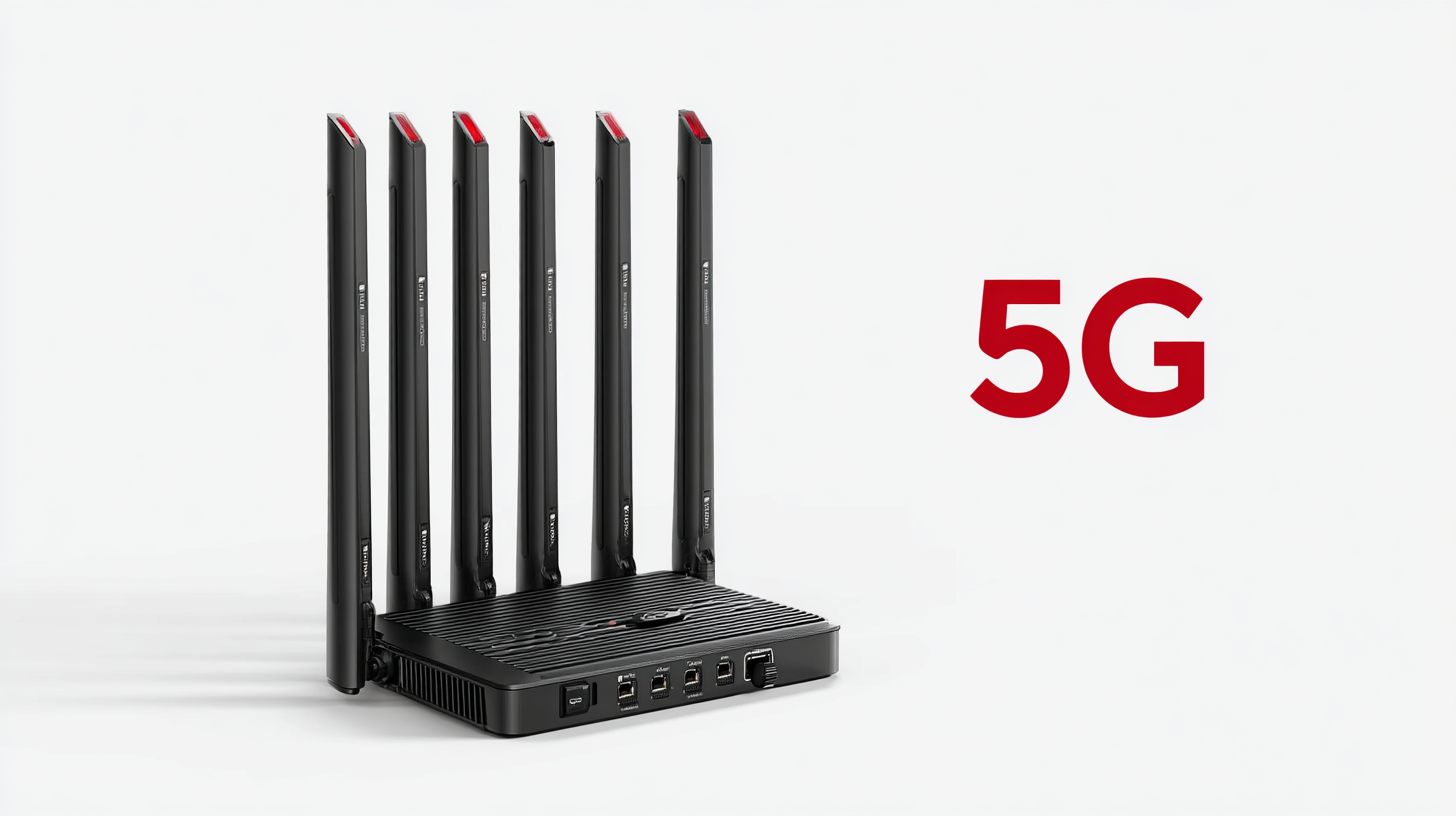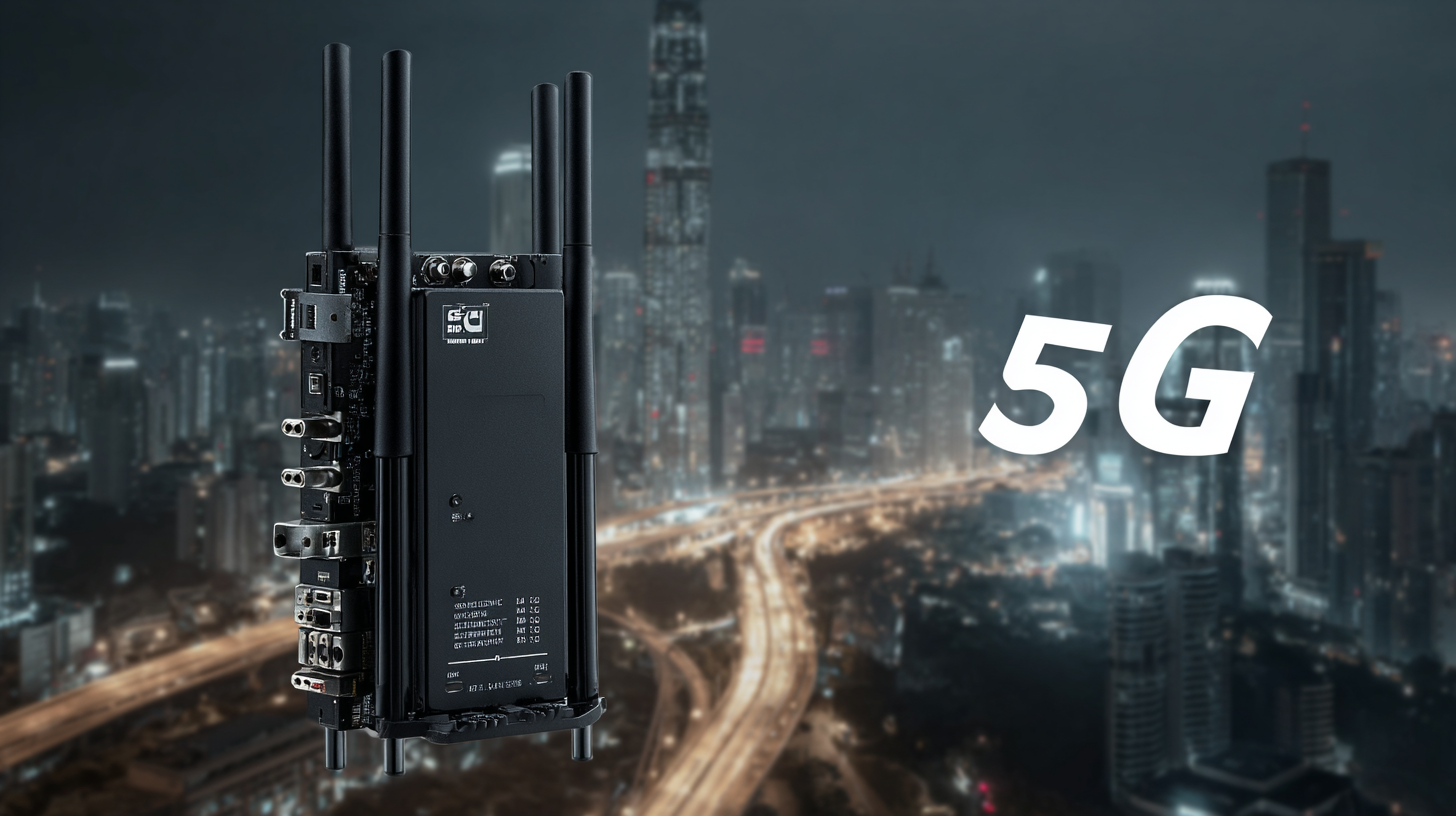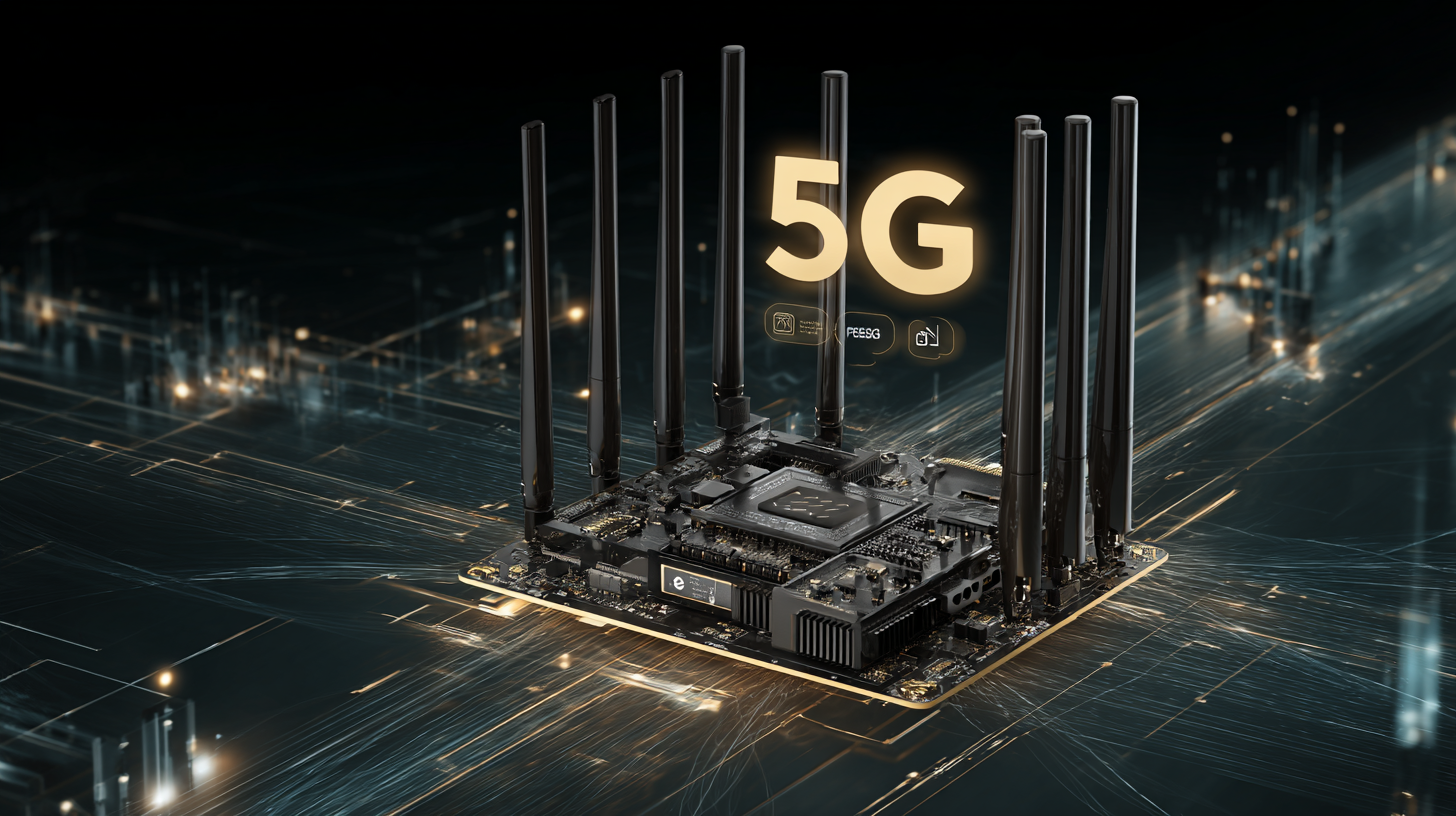As the world rapidly transitions into the era of 5G connectivity, the significance of a robust and efficient 5G Router Sim cannot be overstated. According to a recent report by Ericsson, global 5G subscriptions are projected to surpass 1.5 billion by 2024, highlighting the escalating demand for high-speed internet services. With potential speeds reaching up to 10 Gbps, 5G technology promises not only enhanced mobile broadband experiences but also transformative applications in industries such as IoT, healthcare, and smart cities.

However, this unprecedented growth also brings with it a myriad of challenges, including network reliability, device compatibility, and the need for sophisticated routing solutions that can fully leverage the capabilities of 5G. In this blog, we will explore the key problems associated with 5G Router Sim technologies and discuss how they can be addressed to ensure seamless connectivity in our increasingly digital world.
As we dive deeper into the era of 5G technology, its transformative potential for home and business connectivity is becoming increasingly apparent. One of the most significant advantages of 5G is its ability to provide lightning-fast download speeds, reaching up to 10Gbps. This capability not only enhances streaming and gaming experiences but also supports a multitude of devices without compromising performance. For households and offices reliant on high-speed internet for daily activities, from remote work to smart home systems, 5G connectivity ensures a seamless experience that traditional broadband simply cannot match.
In addition to speed, 5G technology also promises reduced latency, which is a game-changer for businesses requiring real-time data processing or engaging in activities like video conferencing and online collaboration. The ultra-reliable low-latency communication (URLLC) feature of 5G connects devices with minimal lag, making it ideal for industries such as telemedicine and autonomous vehicles. Moreover, the expanded capacity of 5G networks can accommodate more simultaneous connections, which is particularly beneficial as the number of Internet of Things (IoT) devices continues to surge. The evolution towards 5G not only symbolizes faster connections but also a smarter, more interconnected future for all of us.
| Feature | Description | Benefit |
|---|---|---|
| Speed | Up to 10Gbps | Ultra-fast internet for streaming and gaming |
| Latency | Low latency of 1-10 ms | Smooth online experiences with minimal delays |
| Device Capacity | Supports up to 100+ connected devices | Seamless connectivity for homes and offices |
| Range | Wide coverage area with better signal penetration | Stable connections throughout your home or office |
| Flexibility | Portable and easy to install | Ideal for remote work and traveling |
When selecting a top-tier 5G router for high-speed internet access, certain key features should be prioritized to ensure optimal performance. According to a recent report from the Global Mobile Suppliers Association, the global rollout of 5G technology is projected to reach 1.5 billion subscriptions by 2025, highlighting the increasing demand for reliable connectivity. One critical aspect of a 5G router is the capability to support Multi-Input Multi-Output (MIMO) technology, which allows multiple antennas to send and receive more data simultaneously. This can significantly enhance the throughput and capacity of your internet connection, essential for homes and businesses alike.
Another vital feature is the router's compatibility with various frequency bands, including sub-6 GHz and mmWave. These bands drastically affect the speed and coverage; for instance, mmWave can deliver speeds up to 10 Gbps but with a limited range. A router that seamlessly switches between these bands can maximize user experience by ensuring stable connectivity across expansive areas. A report from OpenSignal emphasizes that effective management of network resources is fundamental in achieving seamless connectivity in evolving 5G environments. Choosing a router that embraces these innovations not only prepares your network for the present but also future-proofs it against an ever-expanding digital landscape.
When selecting the perfect SIM card for your 5G router, it is essential to consider several key factors that can significantly impact your connectivity experience. According to a report by the Global Mobile Suppliers Association (GSA), as of mid-2023, there were over 500 million 5G subscriptions worldwide, highlighting the growing reliance on high-speed mobile broadband. To maximize the advantages of this technology, you'll want to choose a SIM that offers extensive coverage and supports the latest 5G bands, particularly those like n78 (3.5 GHz) and n41 (2.5 GHz), which are critical for achieving optimal performance.
Additionally, data plans tailored for 5G usage can greatly enhance your experience. A recent study from OpenSignal indicates that users on 5G networks experience download speeds averaging around 1.3 Gbps, but with the right plan, these speeds can soar up to 10 Gbps in ideal conditions. Look for SIM cards that offer unlimited data options or substantial data caps to avoid throttling, especially if you tend to stream high-definition video or play online games frequently. By focusing on SIM specifications, coverage, and data plans, you can ensure that your 5G router unlocks its full potential for seamless connectivity.
Setting up your 5G router for optimal performance is crucial in today’s high-speed connectivity landscape. With advancements in technology, routers are now capable of speeds of up to 10Gbps, transforming how we experience the internet. To fully unlock this potential, users should ensure their network configurations are meticulously optimized. This includes locating the router in a central position within the home to minimize obstacles that could hinder signal strength and adjusting the frequency bands to suit specific usage patterns, thereby enhancing overall connectivity.

Moreover, it is essential to regularly update the firmware of your router to protect against security vulnerabilities and to benefit from the latest performance improvements. Utilizing advanced features such as Quality of Service (QoS) settings can also help prioritize bandwidth for critical tasks like gaming or streaming, ensuring a seamless online experience. As the demand for faster, more reliable internet continues to grow across various sectors—ranging from BFSI to healthcare—the implementation of robust 5G router setups is more important than ever for both individual users and businesses aiming to thrive in the digital age.
As the demand for faster and more reliable internet connections continues to surge, 5G routers have emerged as a game-changer in the realm of connectivity. In this comprehensive review, we delve into the top contenders in the market, exploring their features, performance, and user experiences. Each router is designed to harness the unprecedented speeds of 5G technology, offering bandwidth that can reach up to an astonishing 10Gbps. This means smoother streaming, lag-free gaming, and seamless video conferencing for both personal and professional use.
We’ll assess the standout qualities of these 5G routers, such as their range, network security features, and compatibility with various devices. Additionally, we’ll highlight the ease of installation and user-friendly interfaces that make these routers accessible to everyone, from tech enthusiasts to casual users. By comparing the best models available, readers will find valuable insights that can guide their purchasing decisions, ensuring they choose the right 5G router to unlock a future of superior connectivity.



